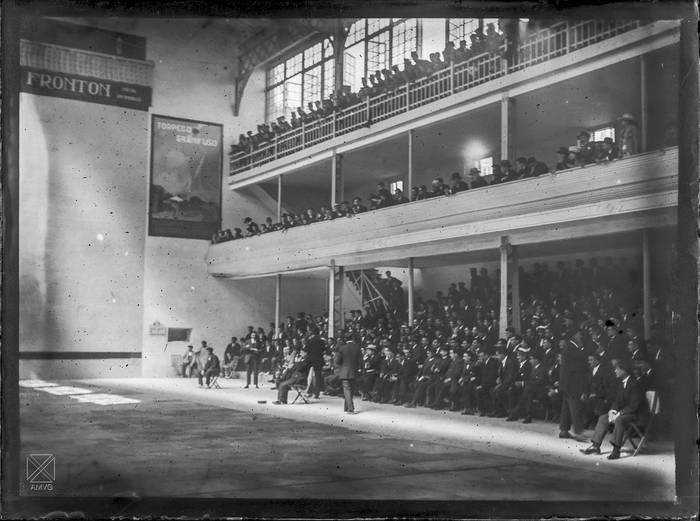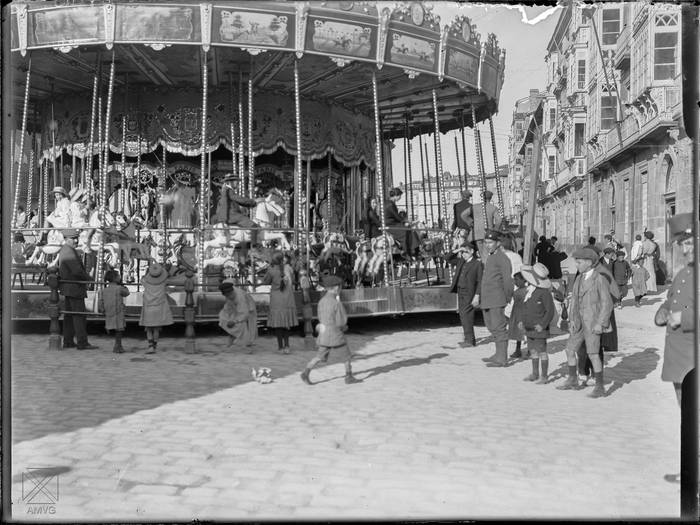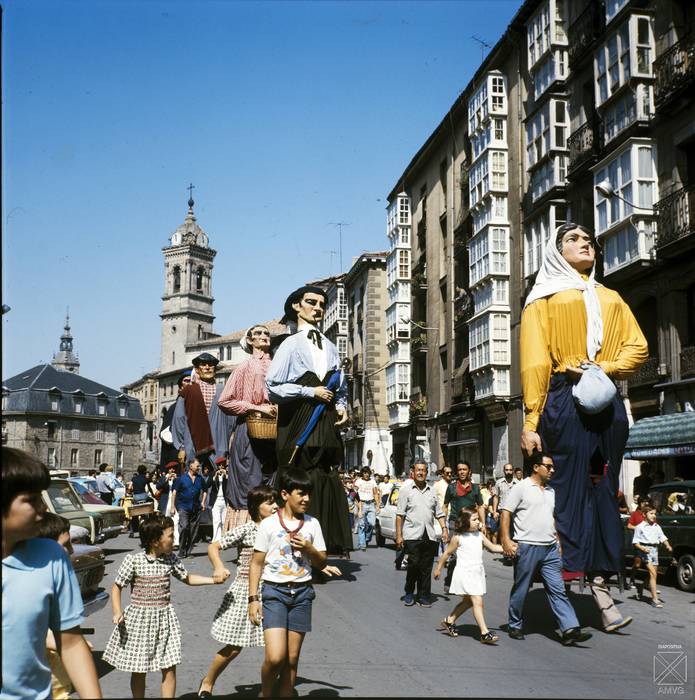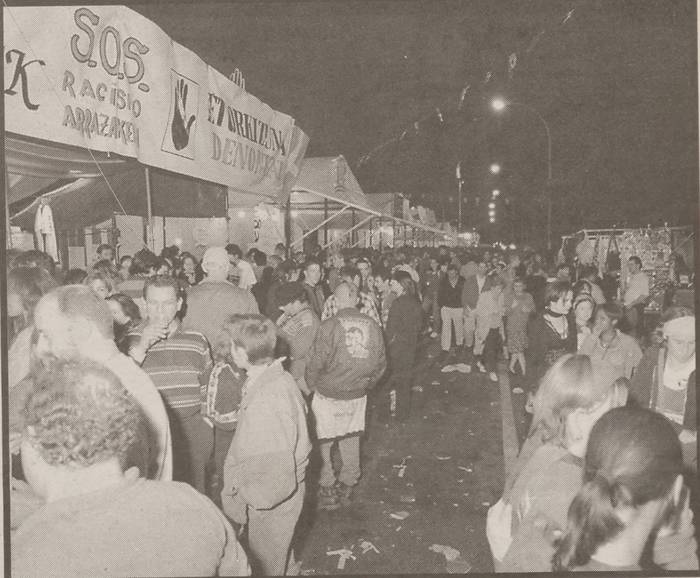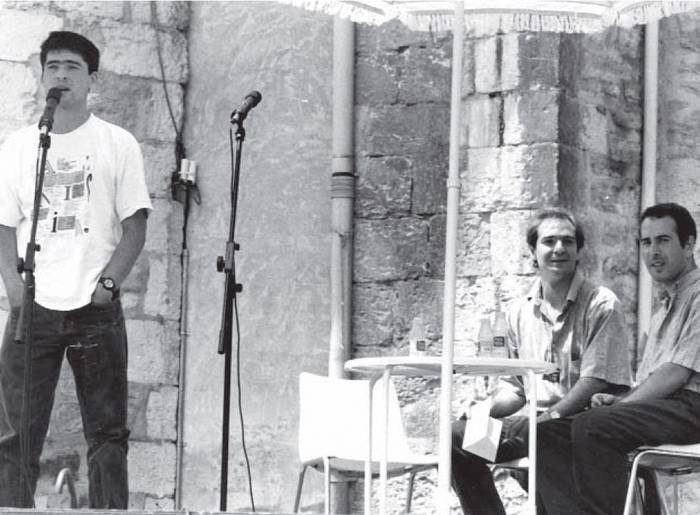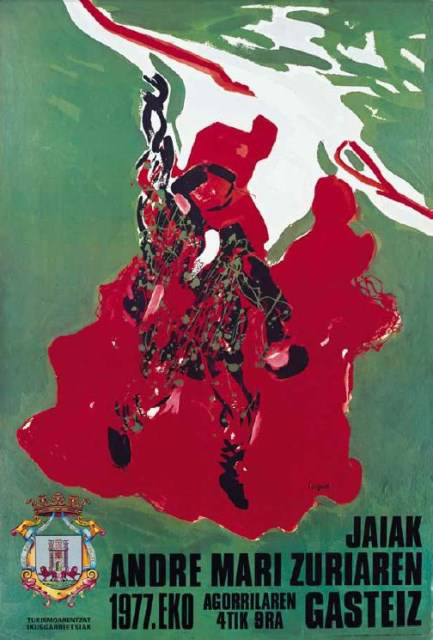Celedon and Edurne have closed the umbrella, Escachapobes and Cachan have kept their heads, Txosnas de Vitoria, who were to commemorate the 40th anniversary, and the Councillor of Culture, Estibaliz Canto, has also had to abandon the strange secret sucking. This year there is no atmosphere in Vitoria-Gasteiz. On August 4, photographers and televisions will represent the balcony of San Miguel and the Plaza de la Virgen Blanca, and in the streets, the mask will replace the blouse and the clothes of girl with the mask.
Because of the coronavirus pandemic, what seems impossible will happen on 4 August: For the first time since 1957, Celedón will not get off San Miguel. Since then, every year, the Vitorians have started the main festivities of the city in different places and accompanied by different characters. This year, along with the pacifier, nine people in the city came up with the idea of lowering the doll named Pepito of the bell tower of San Miguel to Plaza Nueva. In that first year the cable broke and Pepito stayed on the road hung on the roof of the church, but José Luis Isasi finally managed to get off the roof to the balcony of the City Hall, where, jumping, started the party. The following year, Celedón successfully travelled the road between the church and the City Hall and, seeing the size that the extravagance took, in 1971 decided to move the descent to the Plaza de la Virgen Blanca.
The March 3 runway
Since then, the celebrations have remained with some ups and downs. In 1976, the blouses of Vitoria-Gasteiz risked their participation in the festivities, and José Luis Isasi refused to be Celedón. On 3 March last, the five workers killed by the National Police wanted to be remembered and honoured in this way in an event held in Bilbao. However, in the face of the boycott of the blouses, the City Council decided to go ahead with the festivities, and the bullfighter and businessman Enrique Orive replaced Isasi in the bullfighter position. The newspaper El País collected the atmosphere of tension of that year: "The sucking and lowering of Celedón have had fewer spectators than in previous editions (…) Minutes before 6 pm, public art has not dared to enter the Plaza de la Virgen Blanca," he adds. In addition, according to the newspaper, "the tension that exists is such that many vitorians have left the city".
In the archive of the City Hall of Vitoria-Gasteiz, among others, these anecdotes and stories related to the main festivities of the city have been kept, as well as others that we gather below. Surely, the 2020 non-festival chapter will have a privileged place in every newspaper library.
Fronton Vitoriano, big stage Until 1979 the ball festivals were held in the old fronton of San Prudencio Street. The pediment, built on a land provided by Felicia Olabe, was inaugurated on June 29, 1911, and on August 5 of that same year, organized by the Tolosano Orfeón, the first party of the festivities was held. Three years later, businessman Juan Alti raised a roof over the pediment, and the first cathedral of the city's soccer fans was born. For over 50 years numerous ball games have been played, and all the great celebrities of the time played there. The Alavese cyclone José María Palacios Ogeta has been the most famous and important of the Alaveses. When the fronton became obsolete, the City Hall built the Mendizorrotza facilities. |
The barracks change with the city In Vitoria-Gasteiz, the Tiovivo and the rest of the barracks have been in many places, and have moved as the city has been growing. At first they were in the gardens of the capital, in a space called Espolón, in the back of Diputación Street or in the gardens of Las Brigida. Then they approached the Plaza de Bilbao to participate in the show. Around 1939, they settled on Olaguibel Street. In the middle of the twentieth century, they were installed on Prado Street or Becerro Street in Bengoa. In the 1970s they settled on the Paseo de Cervantes and, finally, in the campas of Mendizorrotz. Cars and roller coasters are the classics of barracks. The cars were created in 1920, and in the 17th century the Russian mountains commissioned by empress Catalina la Grande. |
Cabezudos and Gargantúa, the radiance of the street The first four characters of the Vitoria comparison were recovered on August 3, 1917, after being lost at the end of the 18th century. The comparison of giants from Vitoria-Gasteiz, like most of the non-religious customs of the people, was harassed by the powerful. Around 1780 the trail of the characters of the festivities was lost. The disappearance of Carlos III.aren had a lot to do with the Royal Order of 1789. In this sense, he explained that giants will not be allowed to leave in shows and events related to the church because they were "very unshameful". Gargantua is, along with the giants and the heads, one of the most important characters of the festivities, the invention of the French alegiist François Rabelais. The giant, with his big hands and his mouth open, waits for the boys and girls coming in to swallow the long line. Modern Gargantúa, this gigantic slide that is eager to devour the children, first appeared in Bilbao in 1854, and later extended to the parties of Vitoria, which still lasts. The gargantúa had to be displayed with a broken head, since it had to be divided into two to be able to exit the door of the factory in which it was manufactured. |
Txosnas, witness of the popular movement The txosnas were definitely installed on the campus of Vitoria in 2002. The City Hall and the Txosnas Board reached a difficult agreement that year to move the txosnas from the gardens of the new Cathedral during the city festivities. The construction of the underground parking forced the txosnas to leave the place and both sides agreed to this new location. Since 1994, the city collectives had been occupying Luis Heinz Street, when they agreed to move from Florida Park. In those early years, about thirty-five txosnas were laid. The participants included groups such as Bagare, Mugarik Gabe, Hala Bedi Irratia, Askapena, Eguzki, Egizan, Sos Racism, Kakitzat or Euskaraz Bizi, among others. |
The bertsolaris, protagonists of the Plaza del Machete since the 1980s In the 1980s, the first holiday sessions were organized in the plaza del machete, after which the agreements with the City Hall, together with the constitution of the association and a budget, arrived. The bertsos of the festivities were the time to bring the Basques together. Since 2011, the txosna of the Geu association has been in charge of setting up the plaza. |
First poster in Basque In 1977, for the first time, the City of Vitoria-Gasteiz made a Basque version of the festival poster of the Alavesa capital. It was designed by Fernando Illana García. |


